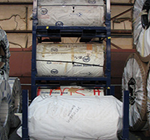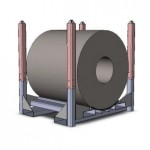Optimizing Inventory Rotation: FIFO and LIFO Systems for Auto Parts
Efficient inventory rotation holds immense importance in the auto parts industry. With a dynamic and rapidly evolving market, businesses need to optimize their inventory management practices to stay competitive and profitable. Effective rotation ensures that older parts are sold or used before they become obsolete, reducing the risk of holding excessive stock and financial losses. It enables businesses to meet seasonal demand by stocking and prioritizing parts accordingly, ensuring customer satisfaction and maximizing sales opportunities.
About The Author
FIFO and LIFO Inventory Systems
FIFO (First-In, First-Out) is based on the principle that the first items purchased or produced are the first to be sold or used. In this system, older inventory is consumed before newer inventory. FIFO ensures that inventory is rotated efficiently, minimizing the risk of obsolescence and ensuring product freshness. It is particularly useful for industries where product expiration or deterioration is a concern.
On the other hand, LIFO (Last-In, First-Out) operates under the principle that the last items purchased or produced are the first to be sold or used. In this system, newer inventory is consumed first, while older inventory remains in stock. LIFO can be advantageous in situations where inventory costs are rising. By selling newer inventory first, businesses can potentially reduce tax liabilities and mitigate the impact of inflation on inventory costs.
FIFO System for Auto Parts Inventory Rotation
The FIFO system is widely used in the auto parts industry for efficient inventory rotation. In the auto parts industry, new models and technologies are constantly introduced, rendering older parts obsolete. By prioritizing the use of older inventory, businesses can reduce the likelihood of holding excessive stock of obsolete parts, thus minimizing financial losses. Additionally, it also helps meet customer demand efficiently. Implementing the FIFO system for auto parts inventory rotation can be facilitated by organizing racks appropriately. Flow racks, for example, allow for easy access to the oldest parts, facilitating their efficient use. Proper labeling and tracking systems also play a crucial role in managing inventory and ensuring that the FIFO principle is followed accurately.
Role of Racks in Implementing FIFO System
In a FIFO system, racks play a pivotal role in maintaining proper stock rotation. By storing the newest inventory at the back and the oldest at the front, racks facilitate a systematic retrieval process, ensuring that the oldest auto parts are used or shipped out first. This methodology helps prevent product expiry, deterioration or becoming obsolete due to extended storage periods. The use of racks also promotes better visibility and accessibility to inventory, allowing for efficient inventory tracking, accurate stock replenishment and improved overall warehouse operations. By implementing racks, businesses can optimize inventory control, enhance customer satisfaction and maximize operational efficiency.
LIFO System for Auto Parts Inventory Rotation
The LIFO system is a method used for inventory rotation in the auto parts industry. In this system, the most recently received auto parts are sold or used first, while the older parts remain in storage. The LIFO system assumes that the newer parts are more likely to be in better condition and have a higher demand in the market. While the LIFO system offers benefits, it also has limitations. It can result in higher carrying costs for older inventory, potential quality issues if older parts are not properly maintained and challenges in accurately tracking and managing inventory levels. Therefore, businesses should carefully evaluate the suitability of the LIFO system based on their specific auto parts inventory and operational requirements.
Role of Racks in Implementing LIFO System
Racks play a crucial role in implementing the LIFO system by providing organized storage and facilitating the proper rotation of inventory. Racks contribute to this LIFO process by providing designated spaces and compartments for storing products, allowing for easy organization and categorization based on arrival dates. By placing the most recent items at the front of the racks, businesses ensure their accessibility and expedite their usage or sale. This systematic rotation helps prevent the accumulation of obsolete or expired items, reduces the risk of inventory spoilage and facilitates efficient inventory management.
Best Practices for Optimizing Inventory Rotation
- Selecting the Right Rack Types:Choosing the appropriate rack types is essential for optimizing inventory rotation. Consider factors such as product dimensions, weight and storage requirements. Options like movable storage racks, push back racks, or pallet racks can facilitate easy access and FIFO or LIFO inventory rotation.
- Implementing Proper Slotting and Labeling Systems: Efficient slotting and labeling systems are vital for quick identification and retrieval of inventory. Organize racks by product categories, SKU numbers or other relevant criteria. Clearly label each slot or location to ensure accurate placement and easy identification of items.
- Regular Maintenance and Inspection: Regular check for any damage, wear and tear, or misalignments that may affect inventory rotation. Conduct routine inspections, including load capacity assessments to ensure racks are in optimal condition.
- Utilizing Inventory Management Software:Implementing inventory management software like real-time tracking systems enable accurate inventory visibility, ensuring timely replenishment and preventing stock outs. By integrating software with rack management, businesses can monitor stock levels, track movements and streamline the inventory rotation process.
Optimizing inventory rotation is paramount in the auto parts industry to ensure efficient operations and customer satisfaction. By understanding the benefits and considerations of each system, businesses can make informed decisions and implement the most suitable approach for their inventory management. SPS Ideal Solutions, a leading company in the field, offers expertise in optimizing inventory rotation with their innovative solutions.
With their deep understanding of the industry and extensive experience, they provide tailored rack systems, labeling solutions and inventory management strategies to enhance inventory rotation practices. If you have any inquiries or questions, you can contact us at info@spsidealsolutions.com or give us a call at +1-585-738-5454. Our dedicated team is ready to assist you & provide the support you need.












